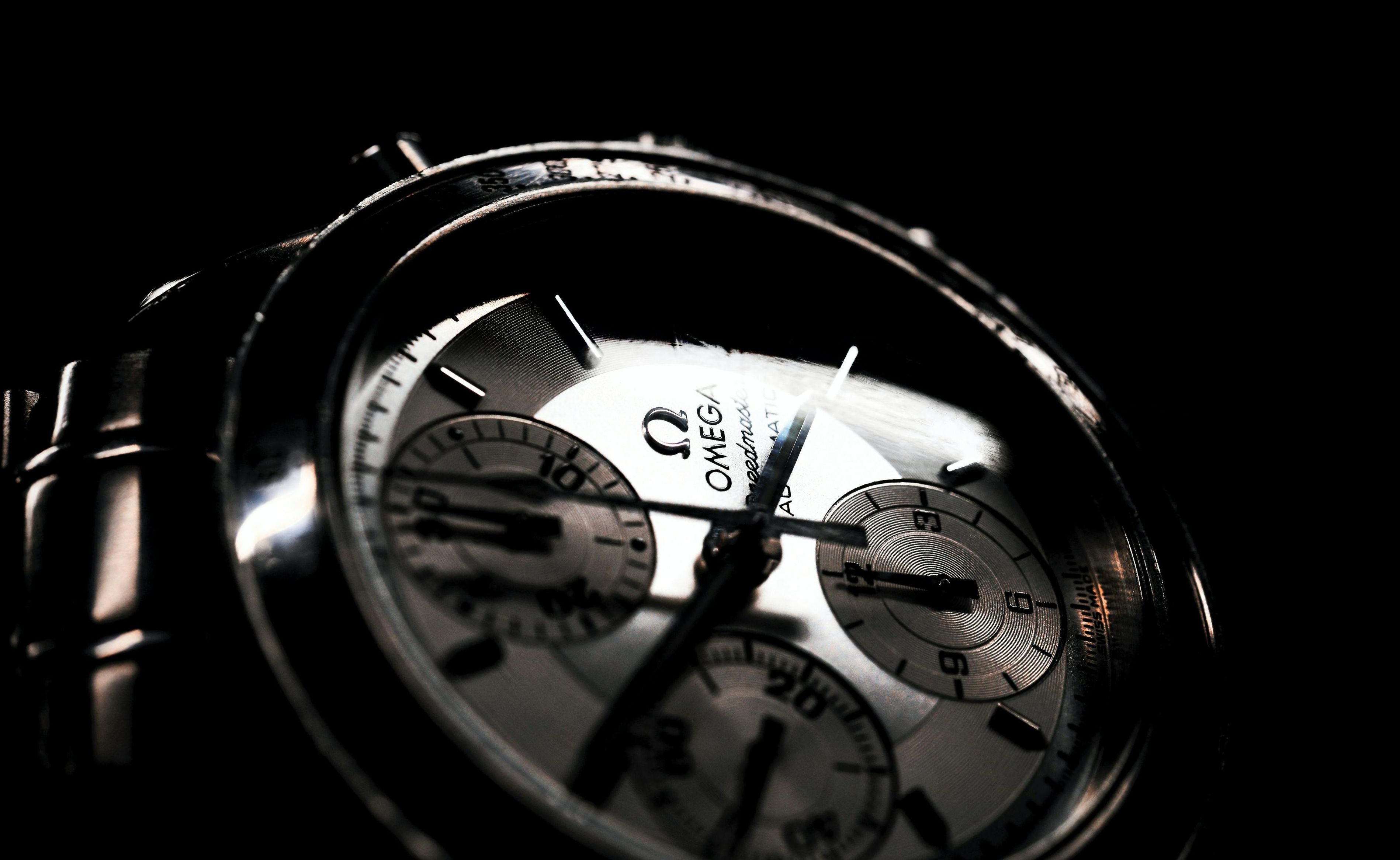Like the founders, members and readers of BonneGueule, FAM wants to go beyond official advertisements/press releases and beyond the information provided by other media which faithfully reproduce, with the exception of a few words, previous press releases.
Their community includes very knowledgeable people, writers on the subject, “insiders” in large houses or independent watchmakers, so they have access to solid and verified information.
Do you like to find out before buying a canvas suit for 1000 euros? So when you are considering purchasing a watch for several thousand euros, you will be interested in understanding a sector that is both rich – in every sense of the word – and exciting and not just in the realm of mechanics alone. His motto: “ The secret of business is to know something that no one else knows ” - Aristotle Onassis.
This file aims to give you the keys to understanding the watchmaking sector and to be better equipped for the purchase of your first "big" watch. It's ambitious, but Don has done a remarkable job of synthesizing it. As usual, your comments to enrich this article are welcome! And to find out Don's opinion on 50 watch brands, it's here .
Good reading !
The two sides of the watch sector
Right side : luxury, beautiful watches, manufacturing in Switzerland, beautiful events, glasses of champagne, pretty photos on Instagram, the image of a film, you are a pilot, you are an cosmonaut, you are a secret agent …
On the other hand : the figures, the prices, the domination of large groups, the omnipresent marketing…
The watchmaking sector and its cozy atmosphere focus the spotlight on watches but, for the rest, it jealously guards its secrets. This is good, at Bonne Gueule, we love revealing them.
Treating yourself to and wearing beautiful things should be a pleasure, but the pleasure is doubled when you understand them. So, let’s try to understand how the watch sector works.
Watchmaking in numbers
There are more than 7.55 billion human beings, but did you know that no less than 1.2 billion watches are sold each year? In other words: every second, 38 watches are produced. With so many watches, you might think that people are keeping time more and more, but that's not really the case.
Switzerland occupies the first place in terms of watch exports with 20.2 billion dollars in 2017, Hong Kong occupying second place with 8.4 billion dollars in exports (*note, Hong Kong is massively oriented towards re-export of imported products), China exporting to the tune of 5 billion dollars. France exports 2.8 billion dollars and is ahead of Germany.
Now, be careful, these exports are in turnover. In terms of quantities, first place is undeniably occupied by China with 688.3 million pieces sold in 2017, the average price being around $4 . Switzerland, for its part, sells 24.3 million watches for an average unit price of 827 dollars .

Source: Swiss Watch Industry Federation
This sector therefore presents very large disparities. From plastic quartz watches to platinum mechanical watches, the wristwatch market remains largely dominated in value by Switzerland while China clearly dominates in quantity.
If we take a closer look at Swiss exports, we realize that there are not only disparities observable on a global scale but that the watch sector presents very different and evolving ranges – like the ready-to-wear sector elsewhere – separately:

Source: Swiss Watch Industry Federation
If we go into detail using the example of Swiss exports, we see that the biggest outlets for watches are evolving globally in this way:

Source: Time
Be careful, residents of the Hong Kong Special Administrative Region of the People's Republic of China (*yes, that's a bit long) and the United Kingdom are not necessarily compulsive watch enthusiasts, but for the former it This is a large import-export market while the second tends to become a platform to capture watch purchases from tourists and business travelers looking for... good deals, particularly in mechanical watches.
Mechanical Vs. Quartz
The match, if there really was one, first took place in the 1970s when the massive arrival of quartz movements almost knocked out the entire mechanical watchmaking sector. Clarification : it is the “failed” which is important. The watch market has evolved considerably since then.
If quartz reigns supreme in quantity – think of the Casio calculator of your childhood which has recently found some favor again during a short-lived fashion comeback in its PVD version
In terms of development, today, quartz is losing ground compared to mechanical watchmaking: concerning Swiss watch exports between 2016 and 2017, quartz watches fell by 7.4% in volume (*and by more than 42% in 20 years) while mechanical watches continue to increase by 3.9% in volume (*and more than 191% in 20 years). This trend has been clear for years (in value terms, it was in 2001 that Switzerland re-exported more mechanical watches than electronic watches).

Whatever the technical arguments on the side of pure precision or the superiority of the life of a battery over the power reserve of a mechanical watch, the advantages which work in favor of mechanical watches are numerous: taste history , authenticity and the charm of a mechanical movement with manual or automatic winding remain without equivalent compared to a watch powered by a simple battery.

Dare to tell me that it’s not beautiful… The Caliber Royal from Pequignet Manufacture, one of the last French houses producing its own movement in France (Source: Le Point)
Even Seiko, which at one point embodied the quartz tsunami with Citizen, is returning massively to mechanical watches and continues to innovate to offer hybrid technologies in particular.
Some will say that a watch is not just about its movement. This is true, but the movement remains the heart of the watch . And to adorn this heart, it needs an excellent case and, precisely, if the watchmaking sector generates profitability in gold, its cases are not only made of this metal.
From plastic to precious metals to steel – mostly 316L but there are other steels like 904L

Of all the bronze watches, I prefer the Black Bay model from Tudor. Bonus: it goes well with the BonneGueule linen sneakers!
There are obviously a large number of materials that can be used for watches and it is not important to make an exhaustive list. On the other hand, it should be noted that although the number of watches exported in precious metals is very low (2%), in value these watch exports represent 34% of the total Swiss watches sold on international markets (China is particularly follower)!

(Source: Swiss Watch Industry Federation)
More than half of Swiss watches are made of steel, but we should not believe that only steel and noble metals like platinum and gold dominate the sector.
In reality, there is a certain excitement in the sector: the industry is trying new materials (for cases):
- Ceramic : it has the immense advantage of not being able to be scratched unlike other metals (*even titanium is likely to be scratched, although more difficult of course) and also of being non-magnetic. Disadvantage: ceramic can break in the event of an impact. As technology evolves, new generations of ceramics currently being developed aim to correct this drawback.
- Polymers : used for composite material matrices, they can have certain advantages but, often, the details concerning them are not provided by the brands. Breitling uses “Breitlight” on certain models, some (good or bad) people will say that it may be plastic 2.0 of limited interest. And others will repeat - while singing - the brand's press release according to which it is a polymer reinforced with carbon fibers... in other words, to translate this technical gibberish: reinforced plastic.
-
Sapphire: yes, you read correctly, this is the material from which watch glass is often made.
. This results in transparent cases with particular colors. The Hublot brand markets several models with this type of case. 
Some will say that it's not very beautiful, I say that it's transparent! 😉 (Source: Hodinkee)
Other materials can be used such as tungsten but, again, we are not going to make an exhaustive list. However, it is important to understand that the watchmaking sector seeks to innovate and also to take advantage of the slightest opportunity to create and maintain the buzz. The fashion for bronze watches continues (for a few short years), but it will not last forever.
The watch sector has long been in tune with fashion and marketing. Cycles are shorter and the need for new products is endless . Due to the costs associated with marketing, production, design and research and development, watch brands are now grouped into groups that dominate the market.
One group to control them all…

The trained eye of a watchmaker sees and controls everything from Switzerland to Mordor!
Sauron would perhaps have made an excellent CEO of a watchmaking group but, in reality, this market is dominated by an oligopoly with several groups which control a majority of major watch brands. To understand the composition of the current watchmaking panorama, it is necessary to understand that this sector has experienced a period of great questioning: the FAMOUS quartz crisis .
If the 1960s saw a golden age in watchmaking, the following decade saw the sector experience the worst crisis in its history. This crisis continued until the mid-1980s and was fatal to a large number of brands: Angélus, Büren, Difor, Gruen, Leonidas, Lip... certain brand names were taken up to reach the seventh level of hell. Then live again by striving to very gradually reconnect with a small part of their traditions, like Lip who is starting to find his roots a little.

Some have forgotten that the world's least secret agent didn't just wear the FAMOUS Rolex...
but also, in a more discreet way, a Gruen in gold (Source: govbergwatches)
There was a more or less ancient time when Breguet, Blancpain, Jacquet Droz, Omega, Longines, Hamilton, Tissot, Rado, Mido, Certina were independent brands or part of other groups. Some were also competitors in the same range (in particular Omega, Longines and Hamilton).
All the aforementioned brands were bought and/or grouped within the Swatch Group, which was then called the Société de Microelectronique et d'Horlogerie, itself resulting from the merger of two other groups (*the Société Suisse pour l'Horlogerie Industrie Horlogère and the Allgemeine Schweizerische Uhrenindustrie).
Mentioned in this way, the creation of a huge watchmaking group like the Swatch Group (*it is currently the leading watchmaking group in the world in terms of sales) can give the impression of the hatching of a hydra but it is necessary understand that mechanical watchmaking was threatened in its very existence.
The arrival of quartz disrupted this industry and led to a necessary consolidation with an even more developed industrialization of production, a primary condition for its survival.
The largest current watchmaking groups are:

Although these groups tend to bring together almost all of the historic watch brands, they are not the only players in the sector.
And for a few more actors….
The watch sector traditionally operates with three players: watch brands/groups, distributors commonly called AD (*Authorized Dealers) and customers.

NB: The watchmakers in the workshops belonging to the brands tend to wear white coats (and their tools are finer). With the automation of production, even at the high end, human intervention tends to be reduced.
Unlike the ready-to-wear sector, the majority of watch brands have their own factories/production workshops . From there, things get tougher. Some brands have adopted a vertical integration model – this is the case of Rolex – which allows them to have and control all aspects of production.
Other brands retain the assembly and acquire the different components of their watches from suppliers. The share of what is actually produced by the brand and the share of components purchased from third parties vary from one brand or group to another. Until the very beginning of the 2000s, the company ETA (*Swatch Group) had a virtual monopoly on the supply of movements or blanks

No, we are not talking about the same caliber as that of the Navarone cannons…
(with the immense Grégory Peck and the no less excellent David Niven)
The situation has changed since then: today, the majority of Swiss movements are still produced by ETA, but Sellita and Soprod have become direct competitors. According to agreements made in the industry, the supply of ETA movements will have to be gradually reduced until ETA only supplies Swatch Group brands.
Certain integrated groups such as the Swatch Group produce, through ETA, movements for its own brands such as Omega, Longines, Hamilton and Tissot for example. Longines and Hamilton can be equipped with the same caliber 2824-2 (*one of the most common calibers in the industry).
Omega no longer produces its own movements but the brand has a specific production line at ETA which exclusively supplies movements such as the Master Co-Axial.
Brands not belonging to the Swatch Group have had to adapt to this new situation .
Tag Heuer (*LVMH) or IWC (*Richemont) use Sellita movements for their cheapest models. The Sellita SW-200 caliber is supposed to be a faithful clone of ETA's 2824-2 caliber... in theory.
In practice, the degree of finishing is not the same and, generally speaking, the original is often better than the copy, even if it is legal. For their more high-end models, brands use manufacturing movements that they have had to develop themselves or acquire from other groups to no longer depend on a supplier (*ETA) who has restricted its deliveries.
Thus, Breitling equips the very beautiful SuperOcean Heritage II with a manufacturing movement supplied by Tudor. The example of Tudor is interesting because the other brand of the Rolex group equipped its watches with ETA movements. Gradually, the Tudor brand is re-equipping its models with its own movement whose architecture is reminiscent of those used by the Rolex house.
Traditionally, brands go through distributors to sell their watches: in value terms, 90% of Swiss watches are sold by distributors (external to the brands). Over the past ten years, brands have started to develop their own store networks.
Thus, you will find several Omega boutiques in Paris which are owned by Swatch Group. This policy tends to sour relations with many distributors, some of whom see their distribution licenses withdrawn. The development of e-commerce is also another source of concern for distributors.
The case of e-commerce
If the majority of customers (*60% according to a Deloitte study) find out about the characteristics, feedback and prices of watches on the internet, the vast majority prefer traditional channels to acquire one . Even if the price factor remains an obstacle to the acquisition on the internet and the delivery of a watch worth several thousand euros, brands are preparing the ground to find in e-commerce a relay for their growth.
- Problem : the prices charged online are the same as those charged by distributors... In other words, it is a matter of disintermediation without customers benefiting in the slightest way ... A game that may seem quite dangerous, especially since the prices charged by the sector are not the most trivial.
As you can see, watchmaking is undergoing a transformation, both on the supply side and on the demand side, and it will ultimately lead to a reorganization of the sector.






